Republishing an excellent article by John Wear.
Did German Homicidal Gas Chambers Exist?
by John Wear · July 28, 2021
A relative of a prominent Holocaust revisionist recently said that the argument Holocaust supporters fear most is “the physical, chemical, topographical, architectural, and documentary evidence of the impossibility of the homicidal gas chamber.” She writes, “And, believe me, the only thing they fear is that people may learn that there were no homicidal gas chambers, and that Jews have lied about that particular point.”
This article discusses some of the evidence proving that there were no homicidal gas chambers in any of the German camps during World War II.
Scientific Evidence Refuting Homicidal Gas Chambers
In every murder trial the prosecution has the burden of proof to show the cause of death. Scientific evidence is usually the most convincing evidence to show the cause of death because scientific evidence can be verified in an objective manner. Incredibly, in the biggest and most publicized murder trial of all time, the prosecution at the International Military Tribunal produced no autopsy reports or expert reports on the existence and operation of the alleged homicidal gas chambers. Even in the Auschwitz Trial in Frankfurt in the mid-1960s and the Majdanek Trial in Düsseldorf in the late 1970s, the defense never thought to request a report on the alleged murder weapons, which have partly survived today. In all of these trials the prosecution relied almost exclusively on eyewitness testimony to convict the defendants of murder.[1]
Dr. Robert Faurisson of France began to question the official Holocaust story and the existence of homicidal gas chambers in the German camps during World War II. Faurisson discovered that executions using hydrocyanic gas were first carried out in the United States in 1924. However, as late as 1988, major difficulties still existed in the construction of American homicidal gas chambers, including the problem of leakage. Since it was so difficult to execute just one person in American gas chambers, Dr. Faurisson became convinced that the execution of hundreds of thousands of people in German homicidal gas chambers was not possible. Faurisson recommended that a scientific study be conducted by an American gas-chamber expert to prove his conclusion.[2]

A scientific study was eventually conducted in 1988 concerning the homicidal gas chambers allegedly used in the German concentration camps. The Canadian government prosecuted Ernst Zündel for the criminal offense of knowingly disseminating false news about “the Holocaust.” As part of his defense in this trial, Zündel commissioned the American gas-chamber expert Fred Leuchter to make a scientific examination of the alleged homicidal gas chambers at Auschwitz, Birkenau and Majdanek. The resulting Leuchter Report is the first scientific study of the alleged German homicidal gas chambers.[3]
Leuchter, who before this assignment had believed in the existence of the gas chambers and the German genocide of European Jewry, was perhaps the leading expert in the United States on the construction and use of execution equipment. Leuchter had designed and manufactured execution equipment of all types prior to this assignment, including electrocution systems, lethal injection equipment, gallows, and gas chamber hardware. He had worked with most of the states in the United States having capital punishment.[4]
As a result of his on-site examination of the alleged German homicidal gas chambers, Fred Leuchter writes:
“After reviewing all of the material and inspecting all of the sites at Auschwitz, Birkenau and Majdanek, your author finds the evidence to be overwhelming. There were no execution gas chambers at any of these locations. It is the best engineering opinion of this author that the alleged gas chambers at the inspected sites could not have been, or now be, utilized or seriously considered to function as execution gas chambers.”[5]
In addition to reporting that the alleged homicidal gas chambers at Auschwitz, Birkenau and Majdanek were structurally unsuitable for gassing, Leuchter researched the chemical properties of the Zyklon B fumigant. Leuchter found that Zyklon B is a highly toxic compound that, when exposed to air at a temperature greater than 78.3º F (25.7º C), releases deadly hydrogen cyanide gas. The released hydrogen cyanide gas clings to surfaces and reacts chemically with materials containing iron, forming ferrocyanide compounds that have a distinctive blue color called Prussian Blue. Since building materials normally contain a certain amount of rust (iron oxide, usually between 1% and 4%), repeated exposure to hydrogen cyanide gas would result in Prussian Blue staining on the walls of the alleged gas chambers.[6]
Leuchter took forensic samples from the alleged homicidal gas chambers at the 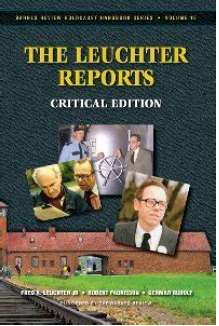 visited sites and a control sample from the delousing facility at Birkenau. The samples were analyzed by an independent laboratory in the United States. The laboratory found no significant ferrocyanide compound traces in the samples taken from the alleged homicidal gas chambers, but the samples from the walls of the disinfection chamber had heavy concentrations of the ferrocyanide compounds. Leuchter concludes that this result would be impossible if the alleged homicidal gas chambers had been repeatedly exposed to hydrogen cyanide gas.
visited sites and a control sample from the delousing facility at Birkenau. The samples were analyzed by an independent laboratory in the United States. The laboratory found no significant ferrocyanide compound traces in the samples taken from the alleged homicidal gas chambers, but the samples from the walls of the disinfection chamber had heavy concentrations of the ferrocyanide compounds. Leuchter concludes that this result would be impossible if the alleged homicidal gas chambers had been repeatedly exposed to hydrogen cyanide gas.
Leuchter also observed that the delousing chambers were airtight, well-made and designed for safety. By comparison the alleged homicidal gas chambers were not airtight, were poorly constructed, and dangerous for the operators. Why would gas chambers designed to kill lice be properly constructed and engineered, while gas chambers designed to kill millions of people be improperly constructed and engineered and dangerous for the operators? Leuchter concludes:
“After a thorough examination of the alleged execution facilities in Poland and their associated crematories, the only conclusion that can be arrived at by a rational, responsible person is the absurdity of the notion that any of these facilities were ever capable of, or were utilized as, execution gas chambers.”[7]
Germar Rudolf, a degreed chemist, expanded on Leuchter’s work by writing the Rudolf Report in the spring of 1992. The Rudolf Report, which has been updated and revised several times, focused on engineering and chemical aspects of the alleged homicidal gas chambers at Auschwitz and Birkenau. Rudolf observed in his on-site examinations that all of the delousing facilities at Auschwitz, Birkenau and Majdanek have one thing in common: their walls are permeated with Prussian Blue. Not only the inner surfaces, but also the outside walls and the mortar between the bricks of the delousing chambers have Prussian Blue staining. Nothing of this sort can be observed in any of the alleged homicidal gas chambers at Auschwitz and Birkenau.
Rudolf also took samples from the alleged homicidal gas chambers and the delousing facilities at Auschwitz and Birkenau. Similar to Leuchter’s samples, the alleged homicidal gas chambers exhibit only insignificant traces of ferrocyanide residue on the same order of magnitude found in any other building. The samples from the delousing chambers, however, all showed very high ferrocyanide residues. Rudolf determined that if mass execution gassings with hydrocyanic acid had taken place in the alleged homicidal gas chambers, the rooms in the alleged homicidal gas chambers would exhibit similar ferrocyanide residue as the delousing chambers. Therefore, Rudolf concluded that mass gassings with Zyklon B could not have occurred in the alleged homicidal gas chambers at Auschwitz and Birkenau.[8]
 In March 1992, a prominent Austrian engineer named Walter Lüftl made headlines when a report he had written stated that the stories of mass extermination of Jews in gas chambers at Auschwitz and Mauthausen are impossible for technical reasons and because they are incompatible with observable laws of nature. At the time of his report, Lüftl was a court-recognized expert engineer who headed a large engineering firm in Vienna.
In March 1992, a prominent Austrian engineer named Walter Lüftl made headlines when a report he had written stated that the stories of mass extermination of Jews in gas chambers at Auschwitz and Mauthausen are impossible for technical reasons and because they are incompatible with observable laws of nature. At the time of his report, Lüftl was a court-recognized expert engineer who headed a large engineering firm in Vienna.
Lüftl states that although the hydrocyanic acid contained in the Zyklon B can kill quickly and certainly, the handling requirements for Zyklon B rule out any significant use of Zyklon B for the mass killing of people. Lüftl states that during the ventilation process after a gassing, Zyklon B would still retain approximately 92% of its hydrocyanic acid content, and would thus continue releasing hydrocyanic acid gas. Lüftl asked: How could the gas chamber operators get rid of the remaining Zyklon B from the midst of dead corpses, without lengthy ventilation periods, and without causing mass deaths outside the gas chambers? Lüftl concludes that because of operational and time considerations, quasi-industrial killing using Zyklon B would be impossible.[9]
Lüftl also states in his report that mass murder with diesel exhaust gasses is a sheer impossibility for reasons of time alone. Lüftl stated that this can be easily proven experimentally, even today, with a few brave men. Therefore, Lüftl concludes that the stories of gas chambers with diesel engines and gas vans at places such as Treblinka can only be disinformation. In his report, Lüftl states:
“The laws of nature apply both to Nazis and anti-fascists. Nobody can be killed with diesel exhaust gas in the manner described [in the Holocaust literature].”[10]
Friedrich Paul Berg, an American engineer, agreed with Lüftl that diesel gas chambers are not an effective means of committing mass murder. Berg states that for any Diesel arrangement to have been even marginally effective for mass murder, it would have required an exceptionally well-informed team of experts to know and do all that was necessary. Berg mentions that even if someone had tried for a time to commit murder with Diesel exhaust, after a few tries it would have become apparent that something better was needed. Berg concludes that the evidence for diesel gassings in the German concentration camps fails to meet the most basic standards that credible evidence must pass to satisfy reasonable people.[11]
Other scientists have concluded that there were no homicidal gas chambers in the German concentration camps. For example, Dr. William B. Lindsey, a research chemist employed for 33 years by the DuPont Corporation, testified in the 1985 Ernst Zündel trial that he considered mass homicidal gassings in the camps to be technically impossible. Based on his on-site examination of the alleged homicidal gas chambers at Auschwitz, Birkenau, and Majdanek, Dr. Lindsey stated:
“I have come to the conclusion that no one was willfully or purposefully killed with Zyklon B in this manner. I consider it absolutely impossible.”[12]
Several attempts have been made by defenders of the Holocaust story to refute revisionist scientific studies of the alleged homicidal gas chambers. For example, Jean-Claude Pressac, a French pharmacist, wrote a book published by the Beate Klarsfeld Foundation entitled Auschwitz: Techniques and Operation of the Gas Chambers. Pressac’s book actually strengthens the revisionist view of the Holocaust story. Both explicitly and implicitly, Pressac discredits countless Holocaust claims and testimonies. Pressac writes:
“This study already demonstrates the complete bankruptcy of the traditional [Holocaust] history…, a history based for the most part on testimonies, assembled according to the need of the moment, truncated to fit an arbitrary truth and sprinkled with a few German documents of uneven value and without any connection to one another.”[13]
Pressac’s book, printed on 564 oversize pages, includes hundreds of good-quality reproductions of original German architectural plans and diagrams, photographs taken both during and after the war, and many documents with translations. Remarkably, in the entire book, Pressac fails to mention anything about the techniques and operation of the German homicidal gas chambers. The title of his book is totally false. Revisionists say that since no homicidal gas chambers ever existed in the German concentration camps, Pressac did not write about the techniques and operation of the gas chambers because there was nothing to write about.[14]
The Kraków Institute of Forensic Research also published results in 1994 that attempted to refute the Leuchter Report. The team from this forensic institute claims not to have understood how it was possible for Prussian Blue to have formed in walls as a result of their being exposed to hydrogen cyanide gas. The researchers therefore excluded Prussian Blue and similar iron cyanide compounds from their analyses, resulting in much lower cyanide traces for the delousing chambers. Their analysis made it practically impossible to distinguish between rooms massively exposed to hydrogen cyanide and those which were not: all would have a cyanide residue of close to zero. The Kraków researchers concluded from their analysis that since the gas chambers and delousing facilities all had the same amount of cyanide residues, humans were gassed in the gas chambers.
Germar Rudolf gave the Kraków researchers irrefutable proof that Prussian Blue can be formed in walls exposed to hydrogen cyanide gas, citing a case document in expert literature.[15] The authors of the Kraków report refused to change their report and admit they made a mistake. Rudolf writes:
“The only ‘scientific’ attempt to refute Frederick A. Leuchter’s most intriguing thesis turns out to be one of the biggest scientific frauds of the 20th century. How desperate must they be—those who try to defend the established version of the Holocaust, i.e., the alleged systematic extermination of Jews in homicidal ‘gas chambers,’ that they resort to such obviously fraudulent methods?”[16]
Additional Evidence Refuting Homicidal Gas Chambers
In 1979 the U.S. government released wartime aerial photographs of the Auschwitz and Birkenau camps taken on several random days in 1944 during the height of the alleged extermination period. These photographs are so remarkable in their clarity that vehicles and even people can be distinguished in them. Many of these photographs were taken at mid-morning on typical workdays. None of these photos show huge pits or piles of bodies, smoking crematory chimneys, masses of Jews awaiting death outside of the alleged gas chambers, or mountains of coke used to fuel the crematoria. All of these would have been visible if Auschwitz and Birkenau had been the extermination centers they are said to have been.
In his book Auschwitz: The End of a Legend, Carlo Mattogno writes in regard to Allied aerial photographs taken at Birkenau on May 31, 1944:
It is pointed out also that the aerial photographs taken by the Allied military on 31 May 1944, at the crucial time of presumed extermination, on the day of the arrival at Birkenau of about 15,000 deportees, and after 14 days of intense arrivals (184,000 deportees, averaging 13,000 per day) and with an extermination toll (according to Pressac’s hypothesis) of at least 110,000 homicidally gassed, which would have had to average 7,800 per day, every single day for 14 consecutive days; after all of that, the photographs do not show the slightest evidence of this alleged enormous extermination: No trace of smoke, no trace of pits, crematory or otherwise, burning or not, no sign of dirt extracted from pits, no trace of wood set aside for use in pits, no sign of vehicles or any other type of activity in the crucial zones of the courtyard of Crematory V nor in the earth of Bunker 2, nor in Crematories II and III. These photographs constitute irrefutable proof that the story of extermination of the Hungarian Jews is historically unfounded.[17]
The Birkenau camp, from an enlarged portion of an Allied aerial reconnaissance photograph taken on May 31, 1944. On this day, according to the official “Kalendarium” (or “Auschwitz Chronicle”), thousands of newly arriving Hungarian Jews were killed here in gas chambers, supposedly located in crematory buildings (Kremas) II and III, visible at the upper left. However, no trace of such mass killings can be found in this or any of the other aerial reconnaissance photos, fortuitously taken during what was supposedly the high point of alleged mass killings in the camp.
German aerial reconnaissance photographs taken in 1944 of the Treblinka camp also cast serious doubts on the widely accepted story that Treblinka was a mass extermination center. Discovered in 1989 in the National Archives in Washington, D.C., these photographs corroborate other evidence indicating that Treblinka was actually a transit camp. The photographs indicate that Treblinka was an extremely small camp. The camp’s burial area appears too small to contain the hundreds of thousands of bodies supposedly buried there. Treblinka was not particularly well guarded or isolated. The aerial photographs show that fields where Polish farmers planted and cultivated crops were directly adjacent to the camp perimeter and were cultivated right up to the edge of the camp.[18]
John C. Ball, a geologist with experience interpreting aerial photographs, has reviewed the wartime aerial photos taken of Auschwitz-Birkenau, Treblinka, Belzec, Sobibór, Majdanek and Babi Yar. Ball concludes:
“To this day there is no air photo evidence to support the alleged mass murder of the Jews at any location in Europe occupied by the Germans during World War Two. Further, air photo analysis refutes the claim that the ‘Nazis’ had intended, at whatever time, to keep events in the alleged extermination camps secret. In many cases the air photos provide clear proof that some of the events attested to by witnesses, such as the destruction of Hungarian Jews or the mass executions at Babi Yar, did not in fact take place.”[19]
A detailed forensic examination at the Treblinka camp using sophisticated electronic ground radar has also found no evidence of mass graves. An Australian team headed by Richard Krege, a qualified electronics engineer, carried out an examination at the site of the Treblinka camp. Krege’s team used an $80,000 Ground Penetration Radar (GPR) device, which sends out vertical signals that are visible on a computer monitor. GPR devices are routinely used around the world by geologists, archeologists, and police. GPR detects any major disturbances in the soil to a normal effective depth of four or five meters.
For six days in October 1999, the team carefully examined the entire Treblinka site, especially the alleged “mass graves” portion, and carried out control examinations of the surrounding area. Krege’s team also carried out visual soil inspections, and used an auger to take numerous soil samples. They found no soil disturbance consistent with the burial of hundreds of thousands of bodies, or even evidence that the ground had ever been disturbed. In addition, the team found no evidence of individual graves, bone remains, human ashes, or wood ashes. Richard Krege concludes from his examination of the site that Treblinka was never an extermination camp.[20]
Startling evidence was also revealed in 1989 when the Soviets released some of the Auschwitz death registry volumes that fell into Soviet hands in January 1945 when the Red Army captured Auschwitz. The death certificates contained in these volumes were official German documents issued by Auschwitz camp doctors upon the death of an inmate. Each death certificate includes the deceased person’s full name, profession and religion, date and place of birth, pre-Auschwitz residence, parents’ names, time of death, cause of death, and a camp physician’s signature. The death registry volumes recorded the deaths of approximately 69,000 Auschwitz inmates, of which approximately 30,000 were Jewish. Most of the deaths were caused by disease, although some death certificates recorded executions by shooting or hanging. None of the death certificates recorded death by homicidal gassings.[21]
The Auschwitz death registry volumes call into question the existence of homicidal gas chambers. Why would the German authorities record executions by shooting or hanging and not record any by gassings? Also, why did the Soviets suppress the release of these volumes for 44 years? The Auschwitz death registry volumes are totally inconsistent with Auschwitz being a center of mass extermination using homicidal gas chambers.[22]

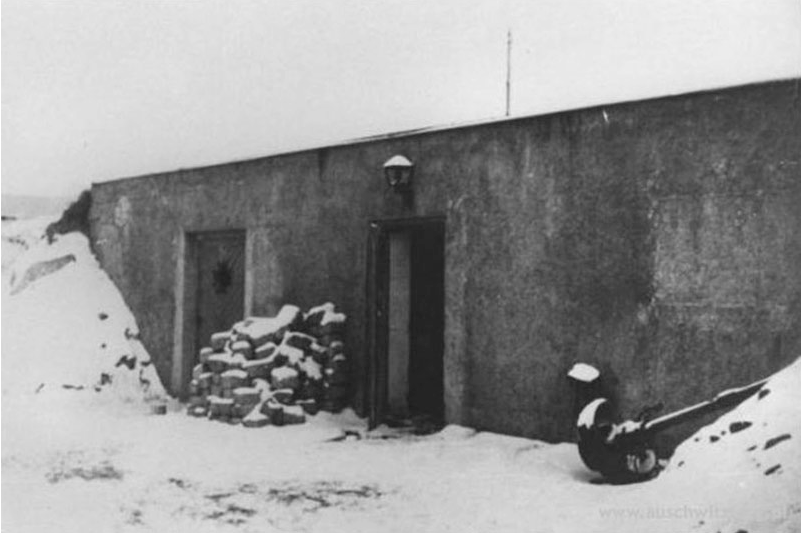
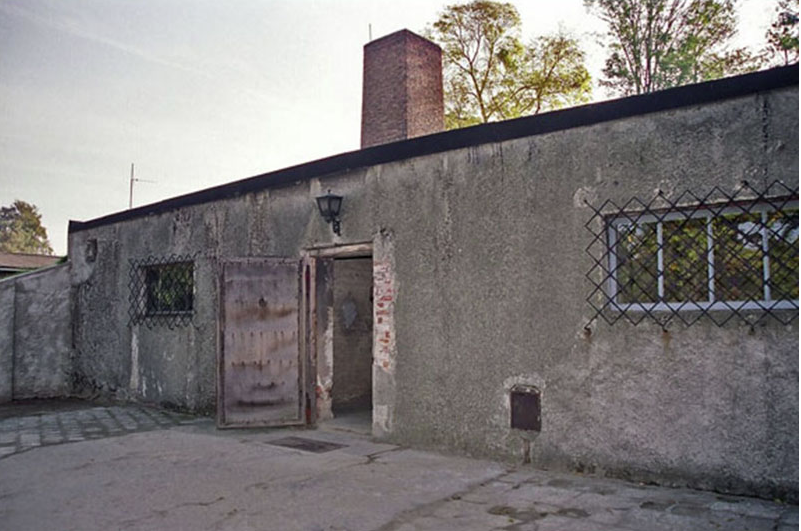
Another important piece of evidence arguing against the existence of homicidal gas chambers is that the British broke the ultra-secret Enigma code used by the Germans to transmit secret communications. During 1942 and 1943 British intelligence intercepted daily coded messages from Auschwitz, Buchenwald, Dachau and seven other camps. Every day the Germans recorded the numbers of dead and the method of death at each camp. The transmissions from Auschwitz mentioned illness as the primary cause of death, but also reported deaths attributable to shootings and hangings. There was no reference to homicidal gassings as a cause of death in any of the decoded messages.[23]
The numbers of dead in the decoded messages from Auschwitz roughly correlate with the numbers of dead recorded in the Auschwitz death registry volumes. Since the Germans made their reports in top-secret transmissions using a supposedly indecipherable code, why would they report deaths from shootings and hangings but not from homicidal gassings? The Germans would have no reason to hide deaths by homicidal gassings in their secret messages if such deaths had actually taken place.
David Cole, a Jewish American, has also produced a very revealing video based on his visit to Auschwitz in September 1992. Wearing a yarmulke and pretending to be a righteous Jew wanting to answer those who question the Holocaust story, Cole paid extra for his personal English-language tour guide. The video shows numerous weaknesses of the alleged homicidal gas chamber at Auschwitz: 1) Obvious marks on the walls and floors where apparently walls have been knocked down; 2) Equally obvious holes in the floor where bathroom facilities had been; 3) A flimsy wooden door with a big glass pane in it; 4) A doorway with no door and no fittings for a door leading to the crematorium ovens; 5) A big manhole right in the middle of the gas chamber; and 6) No Zyklon B staining in the walls. Any reasonable person can tell that the alleged gas chamber shown in the video could not possibly function as a homicidal gas chamber.
In response to David Cole’s questions, Cole’s tour guide repeatedly states that the gas chamber at Auschwitz was in its original state. Unable to answer all of Cole’s questions, Cole’s tour guide went to get a woman who was introduced as the supervisor of tour guides for the Auschwitz State Museum. In response to Cole’s question, the Auschwitz tour supervisor states that the holes in the ceiling of the alleged gas chamber at Auschwitz were rebuilt after the war. Thus, contrary to statements made by Cole’s tour guide, the Auschwitz tour supervisor acknowledges that the alleged homicidal gas chamber at Auschwitz is not in its original state.
David Cole next interviewed Dr. Franciszek Piper, the head of archives and the senior curator of the Auschwitz State Museum. Dr. Piper explained in the interview that the gas chamber shown to tourists at Auschwitz is similar to the one that existed in 1941-1942, but not all details are the same so that, for example, there are no gas-tight doors. In other words, the gas chamber is not in its original state but is rather a postwar reconstruction. Cole’s video documents that the museum officials deceive tourists by representing that the gas chamber at Auschwitz is in its original state even though the museum officials know better. The postwar reconstruction they show tourists at Auschwitz is worthless as proof of anything. Also, there is not a single wartime document or photograph to confirm what the alleged homicidal gas chamber at Auschwitz looked like.[24]
Defenders of the Holocaust story have sometimes made concessions to Revisionist researchers. In the book Auschwitz: 1270 to Present, by Robert Jan van Pelt and Deborah Dwork, the two Jewish authors admit that the gas chamber shown tourists at the main Auschwitz camp is largely a postwar reconstruction built by the Polish government. The authors still allege, however, that there were gas chambers at Birkenau.[25]
There has also been a trend to minimize the importance of the gas chambers in the Holocaust story. In his book Why Did the Heavens Not Darken?: The “Final Solution” in History, Princeton University professor Arno J. Mayer writes: “From 1942 to 1945, certainly at Auschwitz, but probably overall, more Jews were killed by so-called ‘natural’ causes than by ‘unnatural’ ones.”[26] In the same book Dr. Mayer admits that “Sources for the study of the gas chambers are at once rare and unreliable.”[27]
In his 2009 book Worse Than War: Genocide, Eliminationism, and the Ongoing Assault on Humanity, Daniel Jonah Goldhagen writes:
The Germans’ extermination of the Jews is infamous precisely for the gas chambers and the so-called assembly-line killing. Yet whatever such death factories’ existential horror and significance, these installations were not essential for mass murder. This is so obvious it is astonishing that the gas chambers have been turned into the horror’s central aspect, to the longtime neglect and exclusion of so much else (particularly the perpetrators and the victims), as if the gas chambers and technology themselves caused the killing instead of being the incidental implements of people who wanted to kill. Modern technology was unnecessary and the Germans knew this. They killed their victims overwhelmingly without gassing.…[28]
Since the existence of homicidal gas chambers in the German concentration camps has been scientifically disproven, it is understandable that Goldhagen and Mayer would want to minimize the importance of homicidal gas chambers in the alleged genocide of European Jewry.
Conclusion
Dr. Robert Faurisson was probably the first person to point out that all studies of the alleged German execution gas chambers using Zyklon B should commence with a study of the American execution gas chambers. Faurisson began his research in 1977 by obtaining information from six American penitentiaries: San Quentin, California; Jefferson City, Missouri; Santa Fe, New Mexico; Raleigh, North Carolina; Baltimore, Maryland; and Florence, Arizona. During the next several years, Faurisson’s numerous published articles always referred to the American gas chambers. Faurisson also visited the gas chamber in Baltimore, Maryland in September 1979, and obtained eight photographs of the chamber and additional documentation.[29]
Ernst Zündel implemented Faurisson’s ideas in his 1988 criminal trial in Toronto by hiring Fred Leuchter to conduct a forensic examination of Auschwitz, Birkenau and Majdanek. Leuchter concludes in the Leuchter Report that there were no homicidal gas chambers at any of these sites. Additional reports, articles, testimony and videos from Walter Lüftl, Germar Rudolf, Friedrich Paul Berg, Dr. William B. Lindsey, Carlo Mattogno, John C. Ball, Dr. Arthur Butz, Richard Krege and David Cole have conclusively shown that there were no homicidal gas chambers at any of the German camps during World War II.

Endnotes
[1] Rudolf, Germar, “Some Technical and Chemical Considerations about the ‘Gas Chambers’ of Auschwitz and Birkenau,” in Gauss, Ernst (ed.), Dissecting the Holocaust: The Growing Critique of Truth and Memory, Capshaw, Ala.: Thesis and Dissertations Press, 2000, p. 337.
[2] Leuchter, Fred A., Faurisson, Robert, Rudolf, Germar, The Leuchter Reports: Critical Edition, 5th edition, Uckfield, UK: Castle Hill Publishers, 2017, pp. 13-14.
[3] Ibid., pp. 9-10.
[4] Leuchter, Fred A., “The Leuchter Report: The How and the Why,” The Journal of Historical Review, Vol. 9, No. 2, Summer 1989, p. 133.
[5] Leuchter, Fred A., Faurisson, Robert, Rudolf, Germar, The Leuchter Reports: Critical Edition, 5th edition, Uckfield, UK: Castle Hill Publishers, 2017, p. 56.
[6] Rudolf, Germar, “A Brief History of Forensic Examinations of Auschwitz,” The Journal of Historical Review, Vol. 20, No. 2, March/April 2001, p. 7.
[7] Leuchter, Fred A., “The Leuchter Report: The How and the Why,” The Journal of Historical Review, Vol. 9, No. 2, Summer 1989, p. 139.
[8] Rudolf, Germar, “Some Technical and Chemical Considerations about the ‘Gas Chambers’ of Auschwitz and Birkenau,” in Gauss, Ernst (ed.), Dissecting the Holocaust: The Growing Critique of Truth and Memory, Capshaw, Ala.: Thesis and Dissertations Press, 2000, pp. 363-371.
[9] Lüftl, Walter, “The Lüftl Report,” The Journal of Historical Review, Vol. 12, No. 4, Winter 1992-1993, pp. 395-401.
[10] Ibid, pp. 403-406, 419.
[11] Berg, Friedrich Paul, “The Diesel Gas Chamber: Ideal for Torture—Absurd for Murder,” in Gauss, Ernst (ed.), Dissecting the Holocaust: The Growing Critique of Truth and Memory, Capshaw, Ala.: Thesis and Dissertations Press, 2000, pp. 454-456.
[12] The Globe and Mail, Toronto, Feb. 12, 1986, p. M3.
[13] Pressac, Jean-Claude, Auschwitz: Technique and Operation of the Gas Chambers, New York: Beate Klarsfeld Foundation, 1989, p. 264.
[14] Faurisson, Robert, “Auschwitz: Technique & Operation of the Gas Chambers—Part I,” The Journal of Historical Review, Vol. 11, No. 1, Spring 1991, p. 29.
[15] Rudolf, Germar, “A Brief History of Forensic Examinations of Auschwitz,” The Journal of Historical Review, Vol. 20, No. 2, March/April 2001, p. 9.
[16] Rudolf, Germar, “Some Technical and Chemical Considerations about the ‘Gas Chambers’ of Auschwitz and Birkenau,” in Gauss, Ernst (ed.), Dissecting the Holocaust: The Growing Critique of Truth and Memory, Capshaw, Ala.: Thesis and Dissertations Press, 2000, p. 369.
[17] Mattogno, Carlo, Auschwitz: The End of a Legend, Newport Beach, Cal.: The Institute for Historical Review, 1994, p. 32.
[18] Weber, Mark and Allen, Andrew, “Treblinka,” The Journal of Historical Review, Vol. 12, No. 2, Summer 1992, p. 134.
[19] Ball, John Clive, “Air Photo Evidence,” in Gauss, Ernst (ed.), Dissecting the Holocaust: The Growing Critique of Truth and Memory, Capshaw, Ala.: Thesis and Dissertations Press, 2000, p. 284.
[20] The Journal of Historical Review, Vol. 19, No. 3, May/June 2000, p. 20.
[21] Weber, Mark, “Pages from the Auschwitz Death Registry Volumes,” The Journal of Historical Review, Vol. 12, No. 3, Fall 1992, pp. 265-267.
[22] Duke, David, Jewish Supremacism: My Awakening to the Jewish Question, 2nd edition, Mandeville, La.: Free Speech Press, 2007, p. 288.
[23] Hinsley, Frank H., British Intelligence in the Second World War: Its Influence on Strategy and Operations, New York: Cambridge University Press, 1984, Vol. 2, Appendix 5, “The German Police Cyphers,” p. 673.
[24] David Cole Interviews Dr. Franciszek Piper, Director, Auschwitz State Museum. Newport Beach, Cal.: Institute for Historical Review, 1992.
[25] Van Pelt, Robert Jan and Dwork, Deborah, Auschwitz: 1270 to Present, New York and London: W.W. Norton & Company, 1996, pp. 363-364.
[26] Mayer, Arno J., Why Did the Heavens Not Darken?: The “Final Solution” in History, New York: Pantheon Books, 1988, p. 365.
[27] Ibid., p. 362.
[28] Goldhagen, Daniel Jonah, Worse Than War: Genocide, Eliminationism, and the Ongoing Assault on Humanity, New York: Public Affairs, 2009, p. 123.
[29] Leutcher, Fred A., Faurisson, Robert, Rudolf, Germar, The Leutcher Reports: Critical Edition: 5th edition, Uckfield, UK: Castle Hill Publishers, 2017, p. 15.
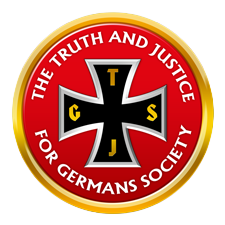
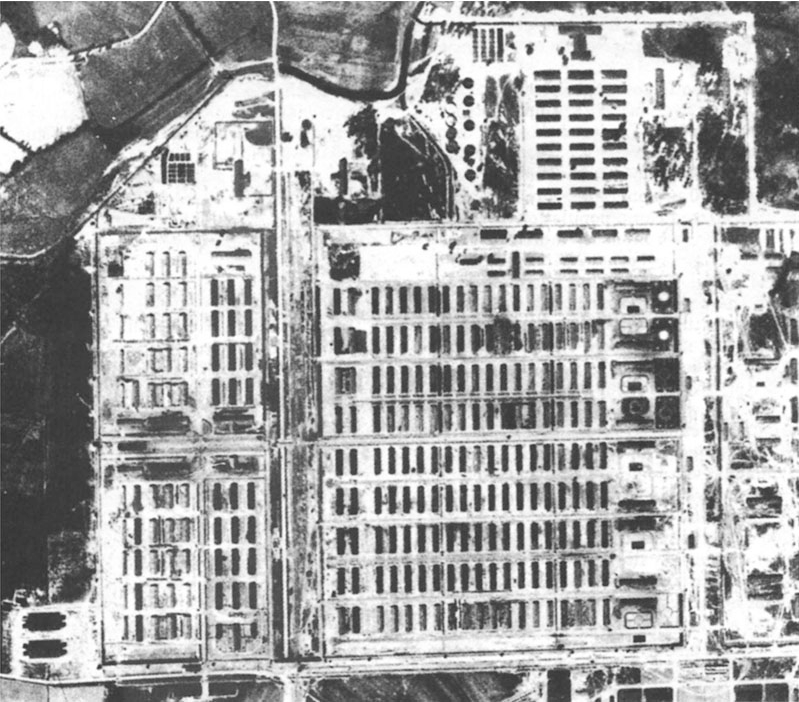
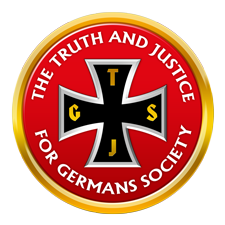
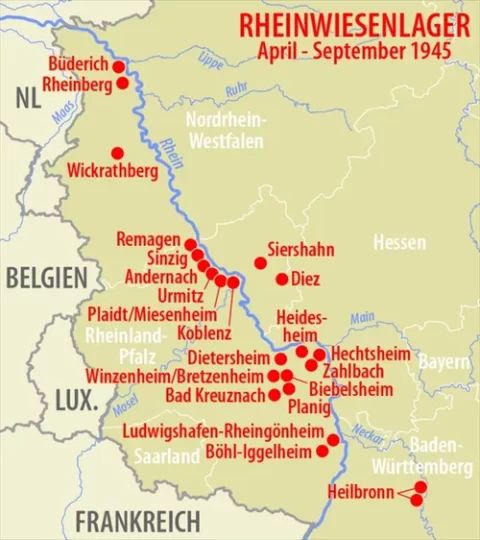
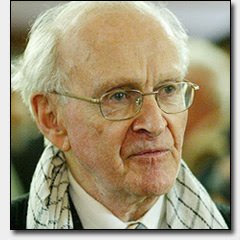
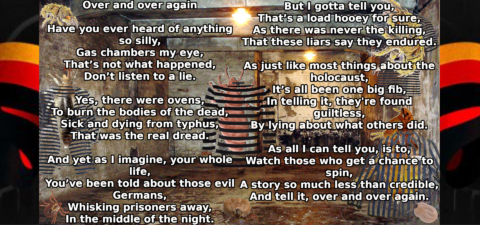
One Response
Excellent pick for a post, Monika! I had no idea about the 1972 investigation that they could not have been designed as gas chambers. Thanks!